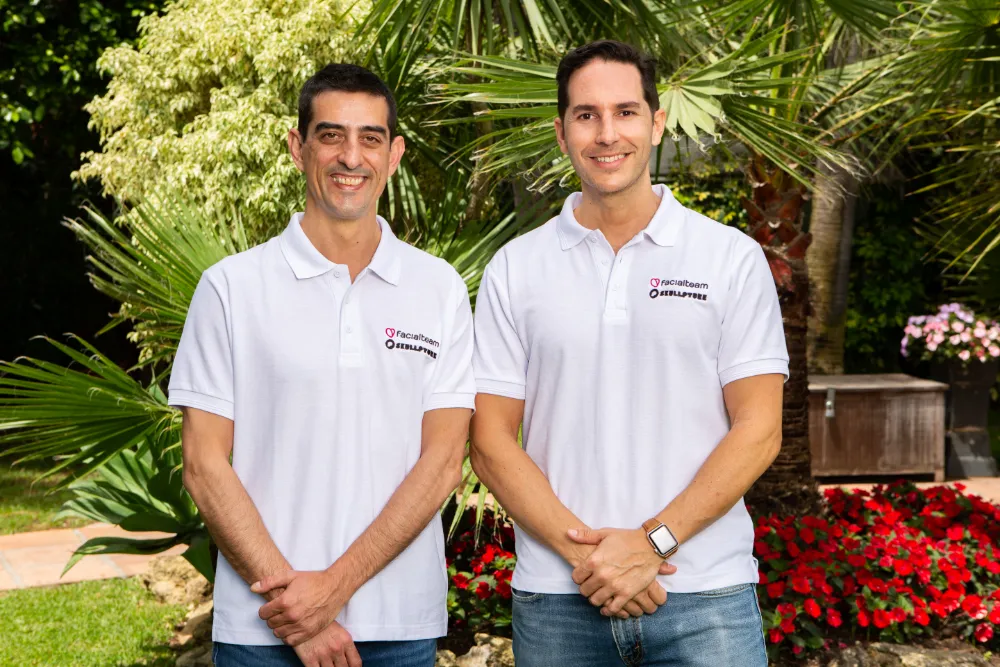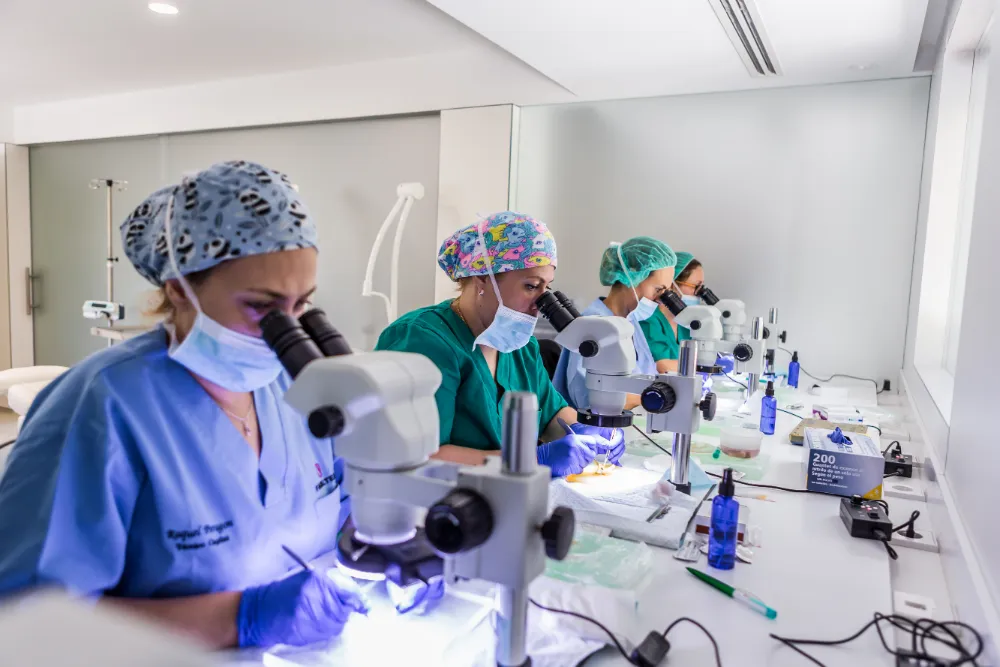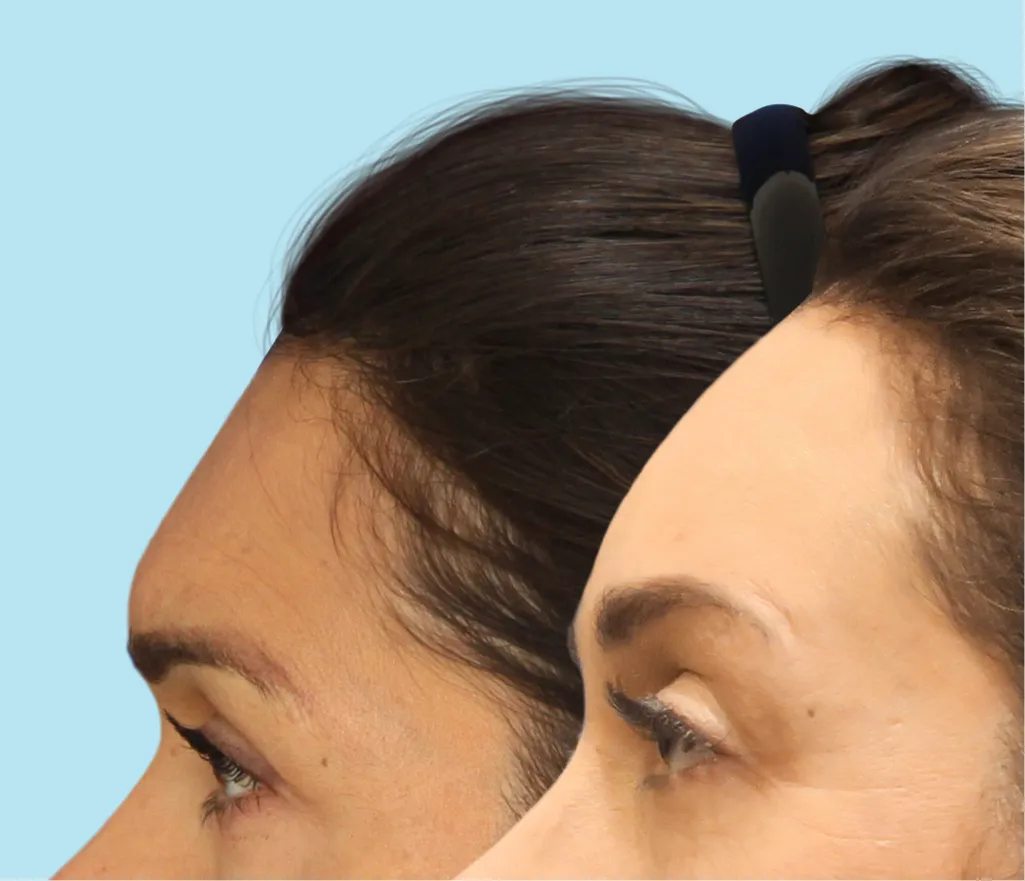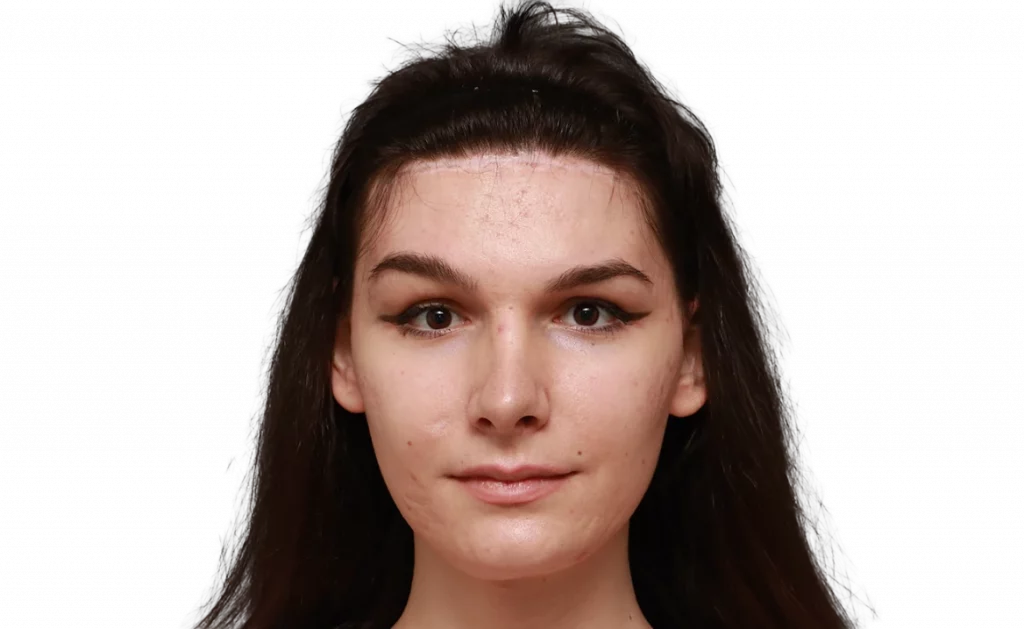Forehead Feminization with the Coronal approach, Pros and Cons
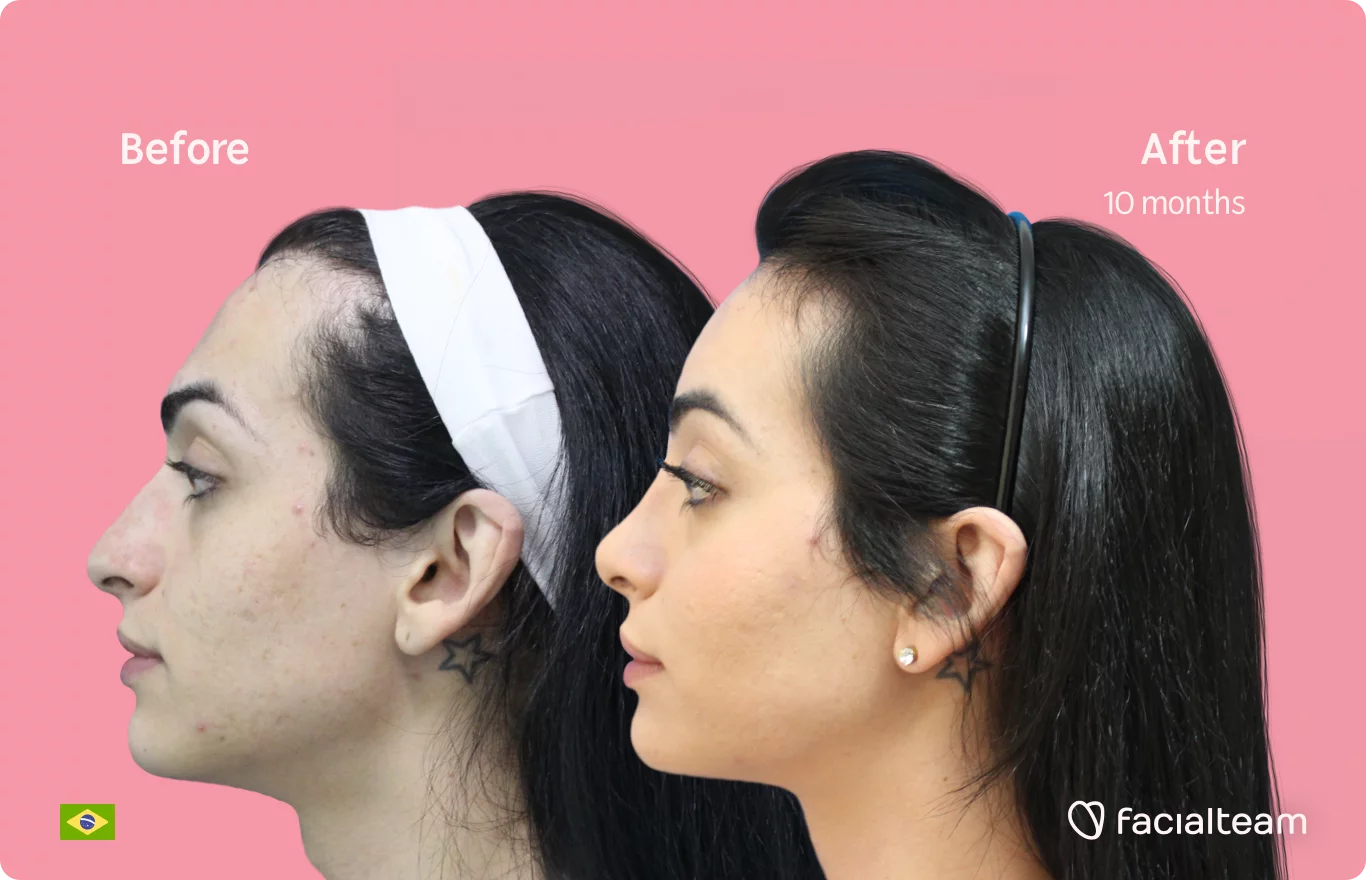
With a wealth of experience in facial feminization surgery, we’ve gained insightful knowledge into what trans women are looking for to transition. Our expertise has taught us that the “frontonasoorbital complex” is paramount when it comes to feminine features – changes can be made of many elements, such as supraorbital ridges, bossing and temporal ridges (entire upper orbital and forehead bone).
Forehead feminization is a significant component of FFS Surgery. The coronal approach, in particular, has become the gold standard for many. With the advent of the FOREContour® method, our understanding and precision in forehead feminization have taken a revolutionary leap forward.
To ensure safety, predictability and optimal results, it’s important to use an ideal approach when performing this procedure in order to properly expose the working field. With so many different approaches being described over recent years – each with its own advantages and disadvantages – we have taken great care at finding safe ways for incision techniques that provide successful outcomes.
Surgical Approaches in Forehead Feminization
If you’re considering feminizing your brow or forehead features, you have a few options:
- Endoscopic approach
- Through-the-hairline approach
- Coronal approaches with several variations
Rest assured that any direct approaches on the forehead skin are not recommended due to a lack of scientific support.
Endoscopic Approach
Endoscopy provides lesser-invasive access to complex anatomical locations – with the benefits of faster healing, fewer incisions and no large scarring. During the early 2000s, this procedure quickly became a go-to choice for certain types of digestive surgery.
Its popularity is limited however; when it comes to feminization procedures in the frontal region, its use decreased rapidly due to anatomical limitations and a lack of supporting data. Nowadays, it remains a rare option as experience available has not proven efficacy.
Hairline Approach
For decades, Facial Feminization specialists preferred the hairline approach for its ability to shorten the forehead. Truth be told, with this technique we can more quickly access nearby regions of your face.
However, while it may seem like the hairline approach is ideal to lower the hairline, many patients have experienced its drawbacks. Through practical insight and experience we’re now aware of the underlying risks associated with this method – making it less desirable than expected.
Forehead feminization through the hairline approach has drawbacks, such as;
- Difficulty in modifying the characteristic M shape of the male hairline
- Visibility of possible scarring, although many patients think otherwise, the length of a hairline scar is the same as the coronal approach scar.
- Inability to fully close temporal regions (receding hairlines)
- Increased difficulty in controlling the eyebrow position
- Risk of the forehead being shorter than the feminine parameters.
We’ve noticed a dwindling interest in the hairline approach, largely due to its limited efficacy. However, there are scenarios where it could be beneficial for certain patients with specific characteristics – make sure you check out our blog post on MtF hair transplant surgery if you’re interested!
Coronal approach
The coronal approach involves an incision made within the hair-bearing scalp. This method provides the surgeon with comprehensive access to the forehead, allowing for extensive remodeling. The FOREContour® method has taken this approach to new heights, further refining and ensuring unparalleled precision in surgical execution.
Advantages of Forehead Feminization with Coronal Approach
Facialteam strive to ensure the best results for our patients when it comes to performing facial feminization surgery. That’s why the our FOREContour® method with the coronal approach is preferred – because of its many advantages:
- It allows us to hide the surgery scar from day one. Avoiding a scar in an exposed area, such as the frontal hairline, is key for the well-being of our patients.
- We can choose the position of the scar, placing it in a posterior area with higher hair density, making the scar even less visible.
- A brow lift can also be performed in conjunction with this procedure, to position the eyebrows higher whenever necessary.
- FOREContour® allows us to offer a simultaneous hair transplant, using the follicles of the strip of scalp that is removed in forehead feminization surgery.
With over 15 years of perfecting the forehead feminization technique, we have elevated it to almost infallible standards. Recent advancements employed in our FOREContour® method include:
- Trichophytic incisions is a method that encourages hair follicles to eventually grow through scars so they become less visible.
- The multiplane suture keeps tension to a minimum. Also, a curvy design, as opposed to a straight line, further hides telltale signs of the incision for a more natural finish.
- We also take caution not to use electrocautery near sensitive areas like scalp tissue or harm delicate root structures.
- Last but certainly not least is the application of platelet-rich fibrin (PRF infiltration), common in regenerative medicine, which helps stimulate natural healing processes.
While forehead surgery has risks like any other major procedure, the rate of complication is relatively very low.
In fact, for every 100 patients undergoing this type of treatment, only 5 can expect to experience some kind of issue — and when it comes to scarring specifically, those chances are even lower at a mere 1%. Our forehead redoing index is lower than 1% historically.
Risks and Complications of Forehead Feminization with Coronal Approach
The coronal incision is a surgical method that is common in certain reconstructive and aesthetic procedures. It is largely effective, but as with any surgery there are potential complications to consider.
- Hypertrophic scar development can occur if appropriate post-operative care is not strictly adhered to or if the scar location is misaligned.
- Keloid is a scar that exceeds the limit of the wound. The potential risk exists, albeit at a low probability, especially with those who have specific skin characteristics.
- Hair Loss or Shock loss is a phenomenon of temporary hair loss (telogen effluvium), around the scar. This is a phenomenon that cannot be predicted. It occurs in 10% of patients and is normally transitory, i.e. reversible. There are topical and nutritional therapies that our team of hair surgeons can prescribe to encourage recovery. Long-term hair loss is rare.
It’s important to speak with your doctor prior to any procedure and consider possible risks involved so that you can make an informed decision. Please see more details about scars after facial feminization here.
Let us answer your questions
If you are reading this article but still need some extra information regarding forehead feminization with the coronal approach, book a free consultation now.
Our team of experts is ready to address any questions you may have regarding this.
Solutions to complications of the Coronal Approach
What are the options for those scars that heal wider than is ideal? One possibility is to first remove the scar that has become wide and resuture it again. This provides a second chance for the scar to heal properly, free of tension and inflammation. It is an outpatient surgery, which can be performed under local anesthesia and sedation, with minimal recovery time.
Alternatively, or in the case a hypertrophic scar still persists, the recommendation is to camouflage it by means of a hair transplant surgery. Transplants on scars are effective, although it is not possible to give the same capillary density to the area as in normal, healthy skin. The result may also be complemented with micropigmentation to mask the lack of density in the area.
A Higher Forehead after the Coronal Approach
One side effect of the coronal incision is that the hairline might rise slightly higher than the pre-surgery level. This becomes particularly noticeable after the removal of the excess scalp, required as a consequence of reducing the bone volume. Patients may become worried about this change to their appearance – and it is important to voice any concerns you have before your procedure.
Our research studying 300 patients showed that the average increase in forehead elevation after skin removal was 2 millimeters. Therefore, it is clear that removing 1 centimeter of skin does not correlate directly to a 1-centimeter rise. Instead, it can be estimated to be somewhere between a 1:5 to 1:10 ratio. That is, for each centimeter, we expect a rise of 1-2 millimeters.
That stated, cases exist where the elevation was higher. The risk of a greater rise of the hairline is significantly higher when the bone volume removed in the procedure is considerable. It’s important for anyone considering this treatment for cosmetic reasons to have well-informed expectations about potential outcomes.
If you’re bothered by a high forehead, you have options. Hair transplants are a safe and highly effective way to not only lower the hairline but also make it more feminine-shaped. Alternatively, the more invasive hairline lowering surgery (scalp advancement) is an option, keeping in mind the previously mentioned unnatural and potentially visible resulting scar which would require additional transplants to improve. With any combination of solutions, our goal is to maintain a natural-looking scalp.
Key Takeaways
- For forehead feminization, the coronal approach with our FOREContour® method is the most comprehensive option out there. It offers patients a safe and reliable way to attain their desired results while also allowing them to conceal any signs of scarring from day one.
- The length of the incision is similar in both the coronal and hairline approaches. Most patients enjoy a practically invisible coronal scar. Small issues with poor scar healing may be addressed with hair grafts or micropigmentation.
- The elevation of hairlines with a coronal approach is typically minimal, only 1-2mm. A larger bone volume removal may result in more elevation.
- Facialteam have an excellent track record when it comes to forehead surgery; fewer than 5% of forehead surgeries result in complications. Only 1% of forehead surgeries have involved complications with the scar. If you’re concerned about developing scar problems or hair loss, we recommend reassessing whether or not this surgery is really necessary for you.
- For patients with a rounded hairline shape and a high forehead that requires lowering of the hairline, the hairline approach might be the best option. However, this approach has higher risks and most candidates are not a perfect fit for this approach.
Choosing the right approach for forehead feminization is paramount. With advancements like the FOREContour® method, not only do surgeons have a more precise tool in their arsenal, but patients also gain a clearer, more detailed understanding of their transformation journey.
These and a number of other risks and complications with forehead feminization are contemplated in the informed consents sent in advance to the patients. We aim to guide our patients towards making well-informed decisions about every gender affirming procedure.



